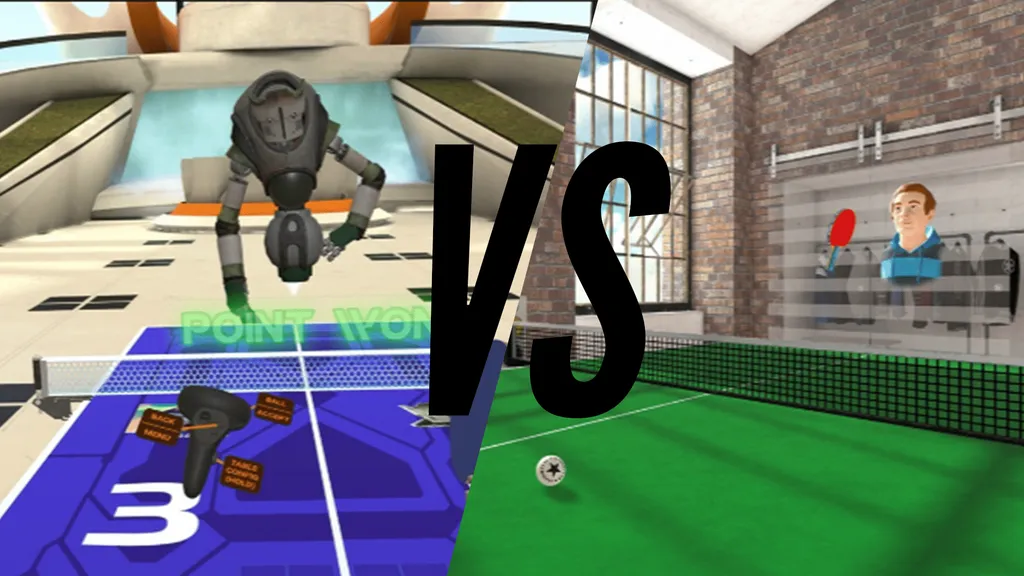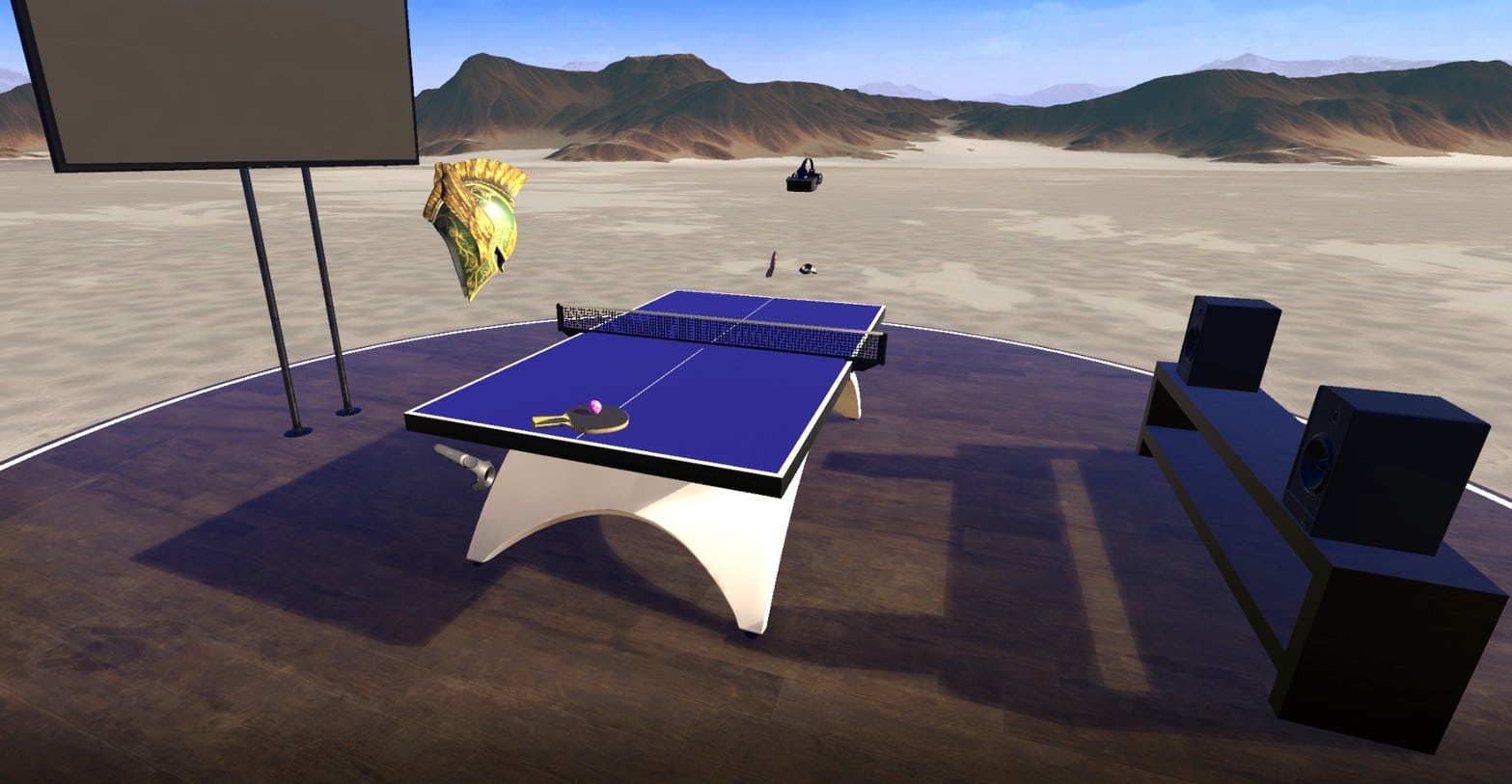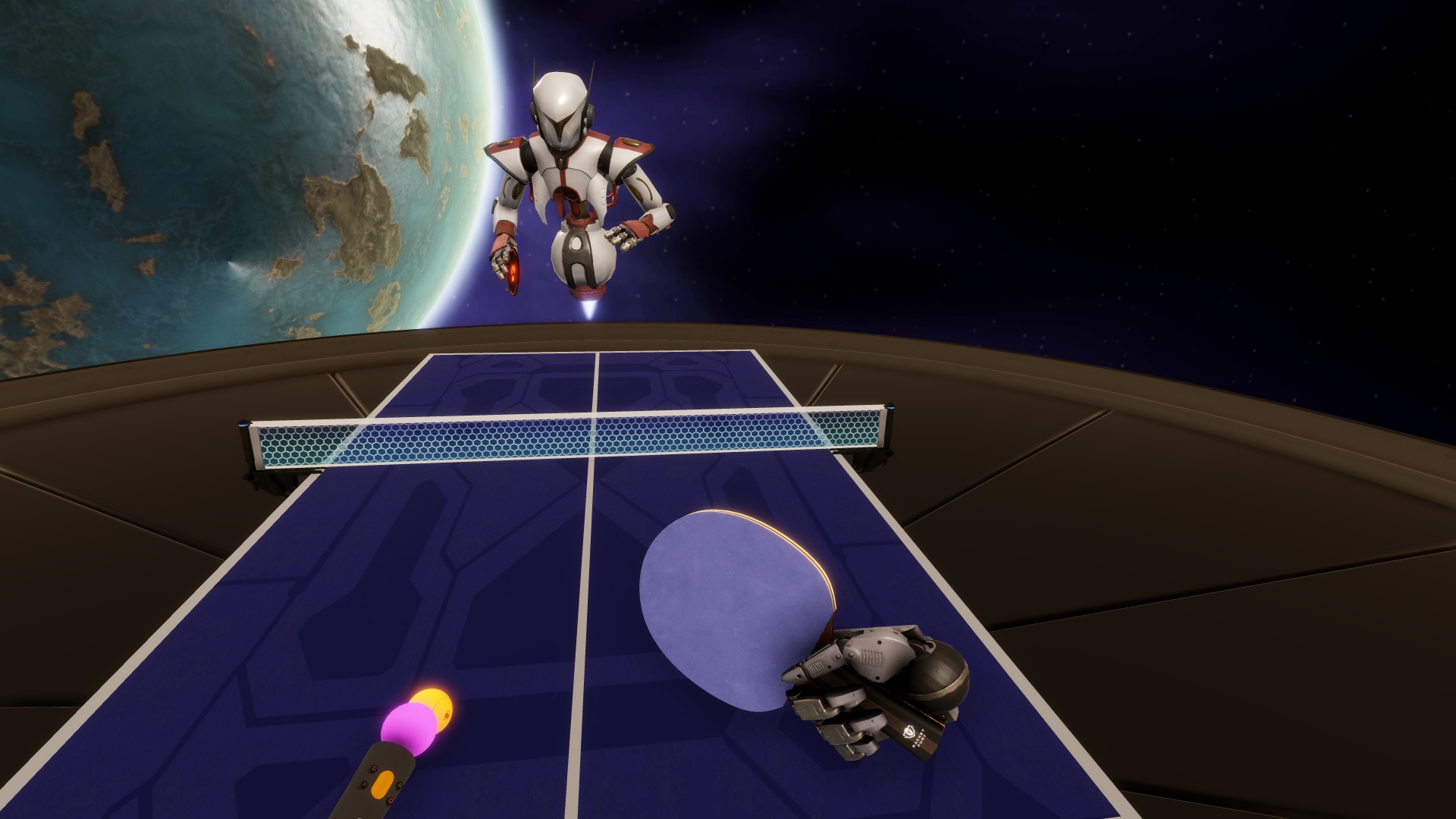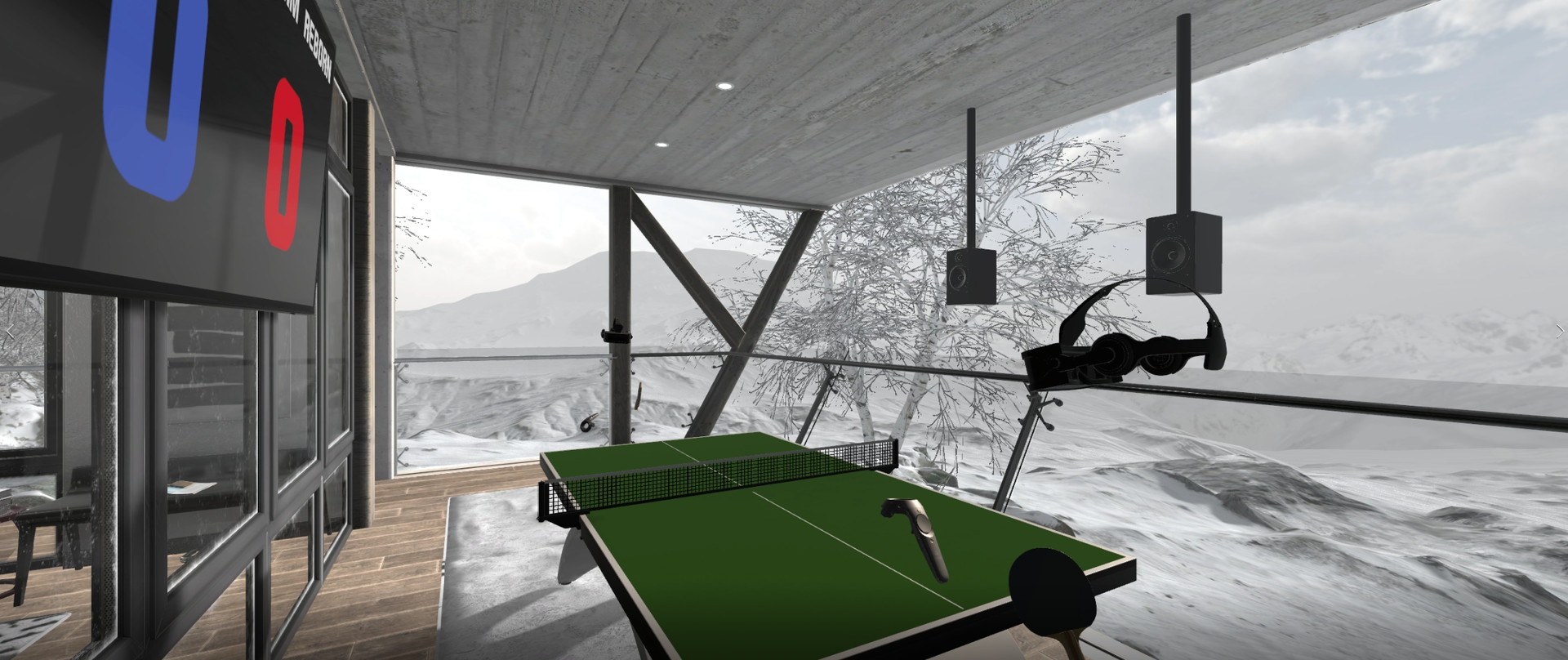Finding the best Oculus Quest ping pong game is a bit like trying to find the most immersive game on the headset. Ping pong is one of those rare things that just works in VR.
There’s no need to run around a massive world and the slight jolt of controller vibration is actually a pretty convincing haptic stand-in for the sensation of hitting a ball with a paddle. Add the wire-free, inside-out tracked Oculus Quest to the equation and you’ve got one of the most immersive experiences you can have in a headset. And, sure enough, two of the most popular table tennis VR games — Racket Fury: Table Tennis VR and Eleven Table Tennis — are now on the platform.
But which is the best Oculus Quest ping pong game?
We spent extensive time with both games across a variety of conditions in search of that answer, which is just a little more complicated than you might expect.
The Best Oculus Quest Ping Pong Game – Racket Fury Or Eleven?
Single-Player Options
Both Eleven and Racket Fury offer single-player matches against AI opponents, though there’s a little more structure to the latter’s solo mode. Racket Fury has a full tournament mode with 16 matches that starts off pretty gently before moving up to more demanding opponents. If you weren’t into multiplayer, this campaign would definitely help justify the price of entry; each opponent offers a fair challenge and you can unlock new avatar options by working your way up a leveling system.
Eleven, meanwhile, treats its single-player offerings mainly as training for multiplayer. That’s by no means a bad thing, it just has a little less structure to it all. You can choose between five levels of AI difficulty (though they’re pretty tough from Medium up) and jump straight into matches either for practice or while you wait for an online invitation. There’s also an extensive practice mode, which lets you fine-tune returns right down to the angle and amount of spin your opponent puts on them. A handful of minigames round out the package.
Multiplayer Options
As important as single-player is to any sports game, chances are you’re most interested in the multiplayer support. Again, both games offer full online options, though this time they’re both in line with what you’d expect; straight up 1v1 matches either with friends or strangers.
We tested both over long-distance and local (same room) matches. Both titles had some inevitable lag when one player in the UK faced off against a friend in California. Of the two, Racket Fury was definitely a smoother experience, though neither offered an ideal solution. For the best results, you’ll need to tackle players closer to you, which results in much better gameplay.
Ultimately, though, which multiplayer you prefer probably comes down to which game’s mechanics you prefer, which leads us onto the most important points…
Authenticity
A vast variety of options is all well and good, but it doesn’t mean all that much if the game doesn’t play very well, does it? Fortunately, both Eleven and Racket Fury hold up on the table, though they both offer their own distinct styles.
For Eleven, realism and authenticity is at the heart of the experience. You know that frustrating feeling you get when picking up a paddle for the first time and sending a ball flying when you thought you gave it a mere tap? Eleven has that. The game requires precise control and patience to a startling degree, so much so that you can pour so much focus into a match you’ll truly forget where you are in a virtual world.
But, just as with the real thing, over time I found myself naturally starting to adapt to Eleven. My returns almost instinctively stopped careening off into the back of the room and I could pretty consistently get a good rally going in single-player. It’s about as close to the real thing as you could hope to get.
Interestingly, Racket Fury offers a take on both realism and something less demanding with an Arcade mode that seeks to lessen that learning curve with a touch of automation. The ironic thing is that, compared to Eleven, the Simulation mode in Racket Fury is still noticeably less convincing. I was surprised, in fact, to find just how different the game felt to Eleven right off the bat (or paddle). The game feels far more forgiving with overpowered hits, as if the ball itself were heavier, and sometimes I felt like my returns were far slicker than they deserved to be. It’s still not a pushover, but something definitely feels just a little off compared to Eleven’s hyper-realism.
Eleven takes the round on realism, then. But there’s something to be said for Racket Fury’s brand of accessible VR ping pong, too…
Accessibility
While Eleven might offer the definitive authentic table tennis VR experience, Racket Fury makes some great strides in accessibility that shouldn’t be overlooked. True, its Simulation mode isn’t quite as convincing as Eleven, but its Arcade mode offers an important option for far more casual players, be they first time VR users, first time table tennis players or those just generally unconcerned with realism.
In this mode, it’s easy to get a rally going by just bringing your paddle up to meet the ball. Wildly overpowered shots will still land you well outside the table, but you can instead focus more on simple reflexes rather than trying to hone your virtual craft. This makes Racket Fury the more instantly accessible game and the better option for, say, passing a headset between friends, though one could argue there’s more worth to investing your time in something you’ll get naturally better at the more you play.
Still, Eleven’s Easy difficulty mode and range of practice options will help you to slowly introduce yourself to the game; it just takes much more dedication than Racket Fury’s Arcade mode. And you can always graduate to Racket Fury’s Simulation mode if you want to graduate beyond Arcade, it’s just not quite as good as Eleven’s offering.
Presentation
Presentation is probably a little lower on your priorities list, especially when, generally speaking, both games look rock-solid on Quest. Tonally, though, both games tend to stick to their roots; Eleven opts for a range of realistic environments with some functional, if relatively basic avatar support. Racket Fury, meanwhile, establishes an entire universe of robo-athletes going head-to-head. Particularly impressive in Racket are the single-player avatars, rarely putting a foot wrong (it probably helps that the robots don’t actually have feet).
Overall
When it comes down to it, the best VR ping pong game is sort of decided on what you want out of the genre in the first place. That might sound like a bit of a cop-out but it’s absolutely true; if you’re looking for a more gentle, forgiving entry point into the sport that doesn’t require any past skill or much in the way of practice, Racket Fury is the way to go. The Arcade mode will get you up and running in an instant with none of the frustration that comes with learning real table tennis, and the option of a more realistic (though inferior t0 Eleven) mode is there if you desire.
But there’s little doubt that Eleven offers a more authentic, demanding table tennis game. And that’s a pertinent point as, even if you think you’ll want the easier experience, in the long term you’d find a deeper, more satisfying rendition of the sport in Eleven, provided you stick with it.
—
Racket Fury: Table Tennis VR and Eleven: Table Tennis are both available now on Oculus Quest and other platforms. What do you think the best Oculus Quest ping pong game is? Let is know in the comments below!





























